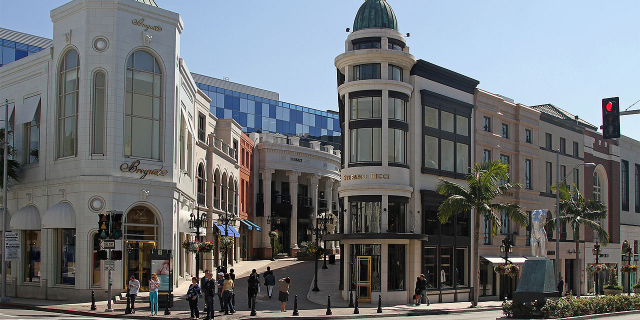California State University, Long Beach

The college was established in 1949 by California Governor Earl Warren, to serve the rapidly expanding post-World War II population of Orange and Southern Los Angeles counties. Since then, CSULB has grown to become one of the state's largest universities.
The institution was first named as Los Angeles-Orange County State College. Peter Victor Peterson was its first president.[1] It offered 25 courses, taught by 13 faculty members, in two apartment buildings at 5381 Anaheim Road in Long Beach. In June 1950, the citizens of Long Beach voted overwhelmingly to purchase 322 acres (130 ha) as a permanent campus for the college, then known as Long Beach State College. The purchase price was nearly $1 million. Student enrollment grew rapidly in this new, permanent location.
Carl W. McIntosh was named the college's second president in 1959.[2] While McIntosh was president, the school grew tremendously. Enrollment surged from about 10,000 to more than 30,000,[3] and he rapidly expanded and revamped the curriculum.[2] McIntosh tripled the number of faculty and constructed 30 new buildings.[3] Although the 1960s were a period of deep unrest on American college campuses, McIntosh's collegial governing style, gentle and quiet demeanor, and willingness to permit protest on campus (so long as it remained quiet and peaceful) helped keep Long Beach State College relatively quiet throughout the period.[4] In 1964, LBSC changed its name to California State College at Long Beach. In 1967, the California state legislature revamped the state college system. It changed its name in 1968 to California State College, Long Beach, as part of these changes and began to be much more closely integrated into the California State College system.[5] However, then as now, it is still called "Long Beach State" for short, especially in athletics.
In 1965, CSULB hosted the first International Sculpture Symposium to be held in the United States and the first such symposium to be held at a college or university. Six sculptors from abroad and two from the United States created many of the monumental sculptures present on the campus. The event received national media attention from newspapers around the country, including The New York Times, Los Angeles Times Magazine, Art in America and a six-page color spread in Fortune.[6]
McIntosh departed for Montana State University in 1969, and was succeeded by President Steve Horn. The California State University Board of Trustees elevated the school to university status in 1972, along with 12 other state college campuses. The decision was made based on total enrollment, size of graduate programs, complexity and diversity of majors and number of doctorates held by faculty at each college. CSCLB thus became California State University, Long Beach, or CSULB.
Also in 1972, the campus became the home of the largest library facility in the then 19-campus CSU system: a modern six-story building with a seating capacity of nearly 4,000 students.
In 1995, President Robert Maxson initiated the privately funded President's Scholars Program, providing selected qualified California high school valedictorians and National Merit finalists and semi-finalists with a full four-year scholarship package, including tuition, a book stipend, and housing. As of May 2010[update], over 1000 students have accepted the scholarship.[7] For applicants for fall 2010, National Achievement Program Semifinalists/Finalists and National Hispanic Recognition scholars were also considered.[8]
In August 2020, CSULB unveiled its new shark mascot, Elbee,[9] following a 2019 student-led process that selected the shark as Beach's new mascot. While Elbee is a shark, the university's Division I intercollegiate athletics program remains “Beach Athletics.”
As of 2022, The Beach was elevated to "Doctoral University: High Research Activity" status by the Carnegie Classification of Institutions of Higher Education, in recognition of the University's evolution from a master's-level comprehensive institution to one that awards doctorates.[10]





































Afegeix un nou comentari